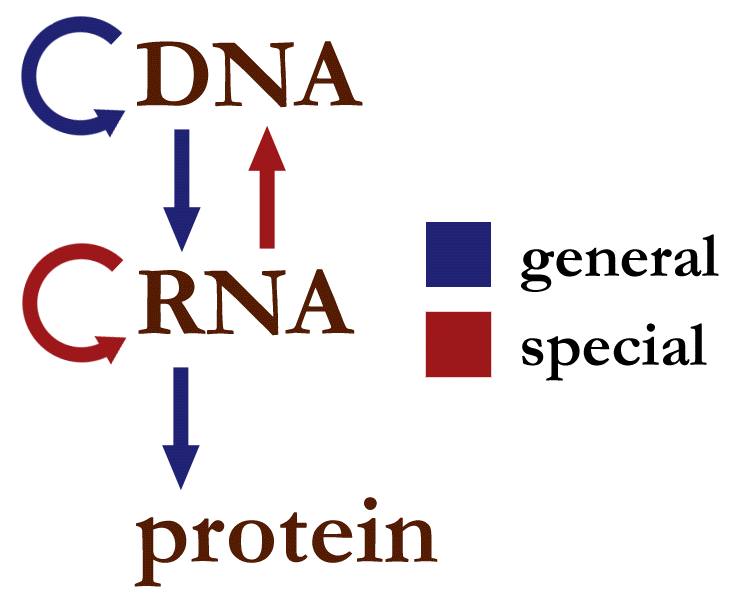 |
| Picture source: Wikimedia
The central dogma of biology is a fundamental concept in molecular biology that describes the flow of genetic information from DNA to RNA to proteins. According to the central dogma, DNA contains the genetic information that is used to produce proteins, which carry out most of the functions in a cell.
However, there are some exceptions to the central dogma. One of the main exceptions is the process of reverse transcription, which is the synthesis of DNA from an RNA template. This process occurs in some viruses, such as HIV, and in some eukaryotic cells during the process of gene expression.
Another exception to the central dogma is the process of RNA editing, which is the modification of RNA molecules after they are transcribed from DNA. RNA editing can involve the addition or deletion of nucleotides, or the substitution of one nucleotide for another. This process can change the sequence of the RNA molecule and, as a result, the protein that it encodes.
Another exception to the central dogma is the process of RNA interference (RNAi), which is a mechanism that cells use to regulate gene expression. RNAi involves the degradation of specific RNA molecules by enzymes called RNases. This process can prevent the production of proteins that are encoded by the degraded RNA, which can have important effects on cell function.
While the central dogma of biology is a fundamental concept in molecular biology, there are some exceptions to this rule. Understanding these exceptions can provide important insights into the complex processes that occur within cells.
|
